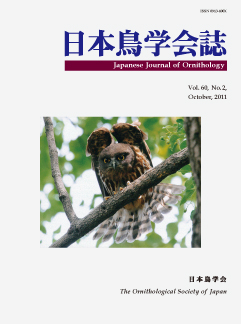Volume 59, Issue 2
Displaying 1-9 of 9 articles from this issue
- |<
- <
- 1
- >
- >|
ARTICLES
-
Article type: Articles
2010 Volume 59 Issue 2 Pages 139-147
Published: October 20, 2010
Released on J-STAGE: November 08, 2010
Download PDF (353K) -
Article type: Articles
2010 Volume 59 Issue 2 Pages 148-160
Published: October 20, 2010
Released on J-STAGE: November 08, 2010
Download PDF (615K) -
Article type: Articles
2010 Volume 59 Issue 2 Pages 161-167
Published: October 20, 2010
Released on J-STAGE: November 08, 2010
Download PDF (365K)
SHORT NOTES
-
Article type: Short Note
2010 Volume 59 Issue 2 Pages 168-173
Published: October 20, 2010
Released on J-STAGE: November 08, 2010
Download PDF (303K) -
Article type: Short Note
2010 Volume 59 Issue 2 Pages 174-180
Published: October 20, 2010
Released on J-STAGE: November 08, 2010
Download PDF (264K)
OBSERVATIONAL DATA
-
Article type: Observational Data
2010 Volume 59 Issue 2 Pages 181-184
Published: October 20, 2010
Released on J-STAGE: November 08, 2010
Download PDF (9600K) -
Article type: Observational Data
2010 Volume 59 Issue 2 Pages 185-188
Published: October 20, 2010
Released on J-STAGE: November 08, 2010
Download PDF (1769K) -
Article type: Observational Data
2010 Volume 59 Issue 2 Pages 189-193
Published: October 20, 2010
Released on J-STAGE: November 08, 2010
Download PDF (3548K) -
Article type: Observational Data
2010 Volume 59 Issue 2 Pages 194-197
Published: October 20, 2010
Released on J-STAGE: November 08, 2010
Download PDF (6585K)
- |<
- <
- 1
- >
- >|
